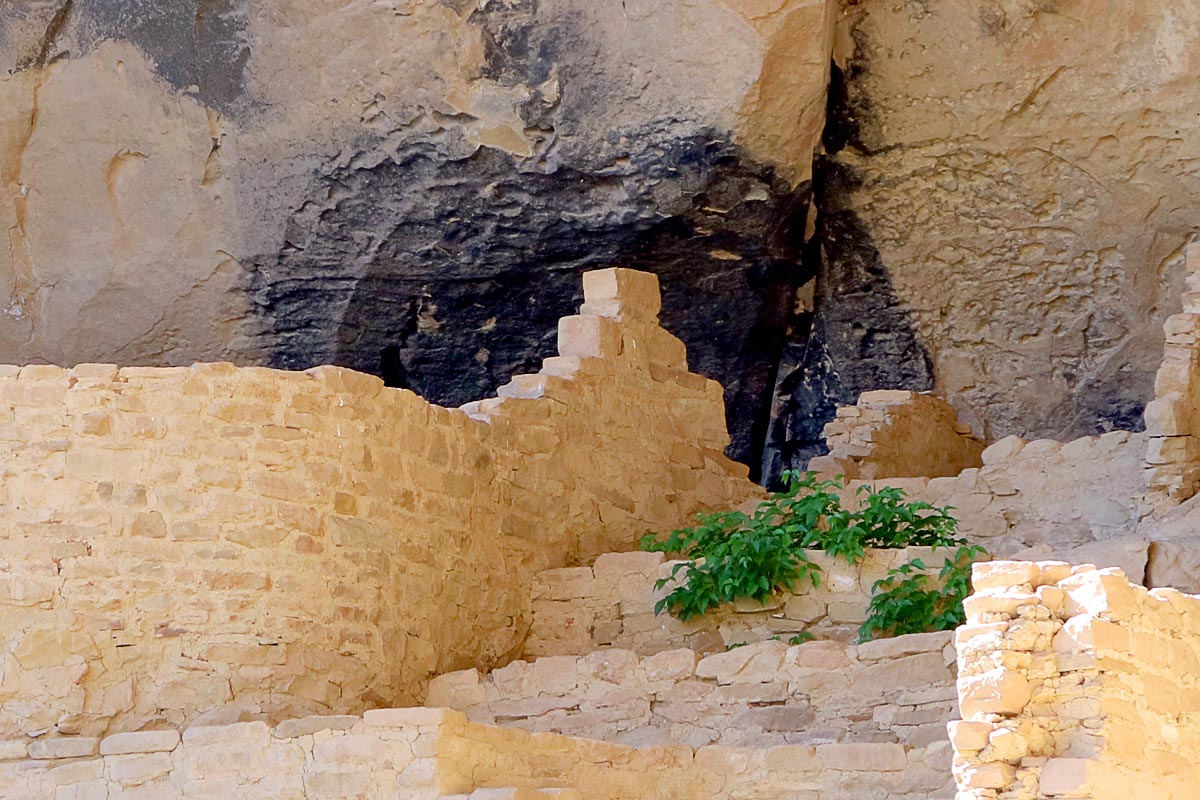
The iron man came to the top of the cliff
How far had he walked nobody knows
Where had he come from nobody knows
How was he made nobody knows
—Pete Townsend
If you let a minor hassle become a major frustration, high blood sugar may well be your reward. It’s one of the ways that diabetes makes one stronger: you learn how to let that which is unavoidable go, to instantly let bygones be bygones. Well, it’s fun for me to get all high and mighty and pronounce that – and it is true – but I admit that I violated this principle upon a visit to Mesa Verde National Park in southwestern Colorado. I turned up the grumpy dial to 11, and high BG was indeed the result.
The good news is that Mesa Verde used its vast beauty and wonder-inducing ancient cliff dwellings to salve my foul mood, if not to ease my blood sugar back down.
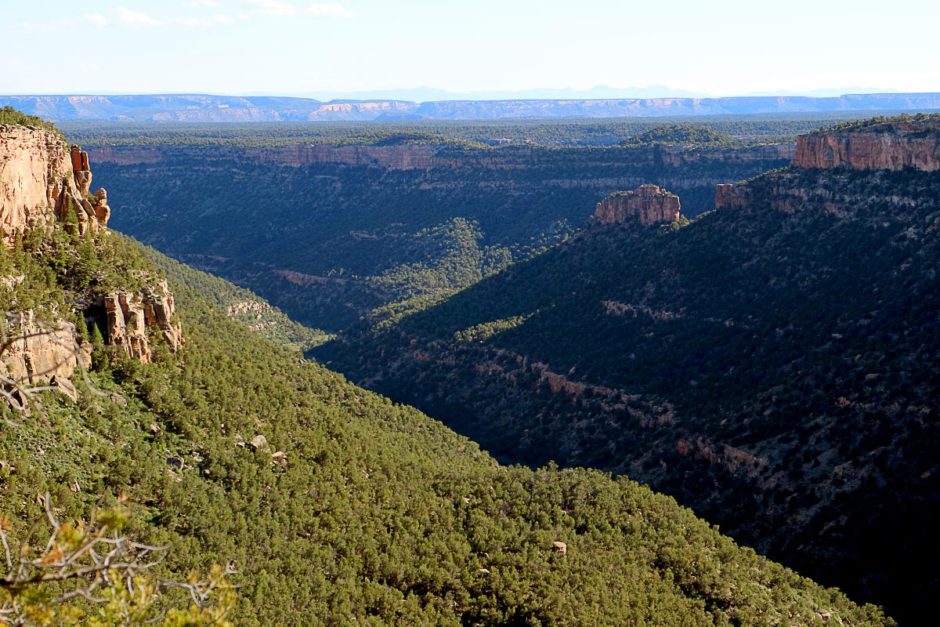
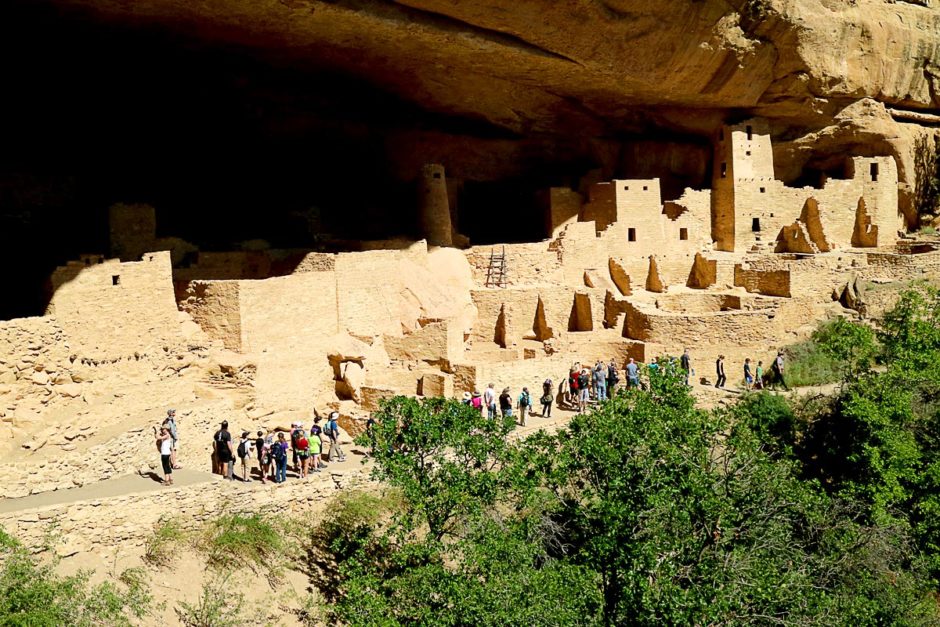
Mesa Verde is an area made up of large round-edged canyons, sloping downward on all sides under short green vegetation that can’t quite hide the outsized hard rock of the land underneath. But despite all the sweeping vistas the real story of Mesa Verde is tucked under its steeper and lighter-colored cliffs: the 800-year old brick structures that the ancestors of modern Native Americans built and lived in.
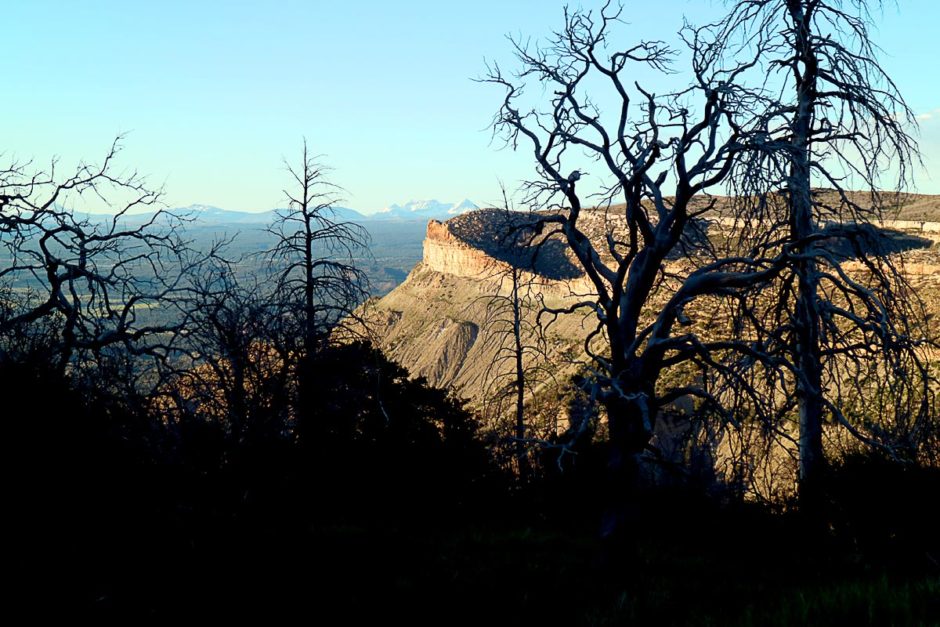
The plan for Masayo and I was to arrive at the Park and secure a campsite for the night, then see some sites both today and tomorrow before heading off to Arizona. There’s a lot to see, and various tours are available. Securing a campsite would be easy; I hadn’t made reservations but the Park’s official website promised there would be no problem.
“With 267 sites, there’s always plenty of space! The campground rarely fills.”
– from the official NPS Mesa Verde website
So we didn’t need reservations, which aren’t available anyway. Adding to the promise of a fun night camping in Mesa Verde, there was a restaurant that served all-you-can-eat pancake breakfasts, actually within the campground. Not exactly roughing it, nor a particularly good thing for a diabetic, but who cares – it sounded like fun.
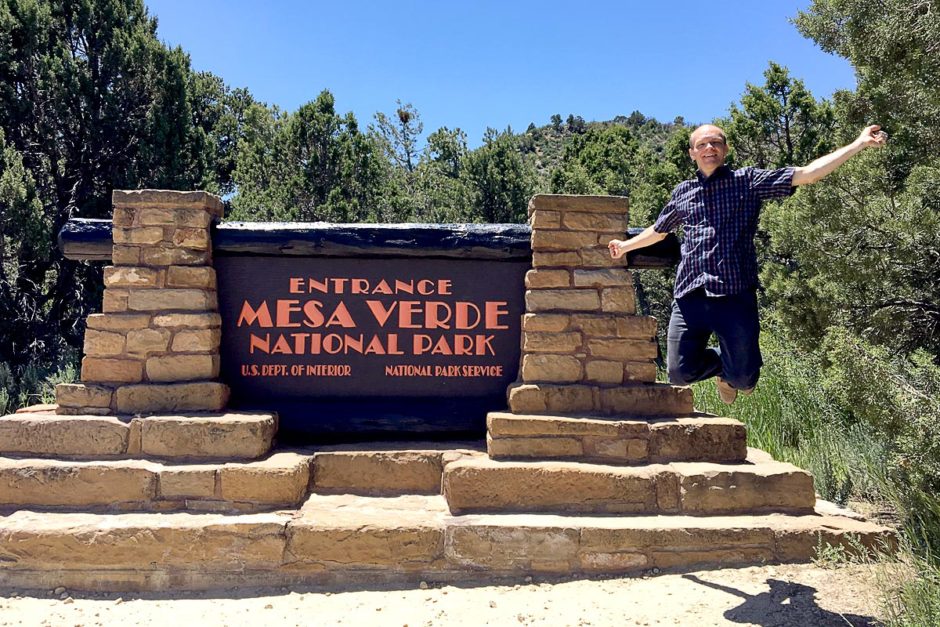
At the visitor center I spoke with a ranger about the campground. He confessed that he didn’t know how the campground worked or what the process might be, and that I would have to enter the Park proper and check it out myself. No ranger had ever told me this before at any other Park; they always know the latest status of every campground.
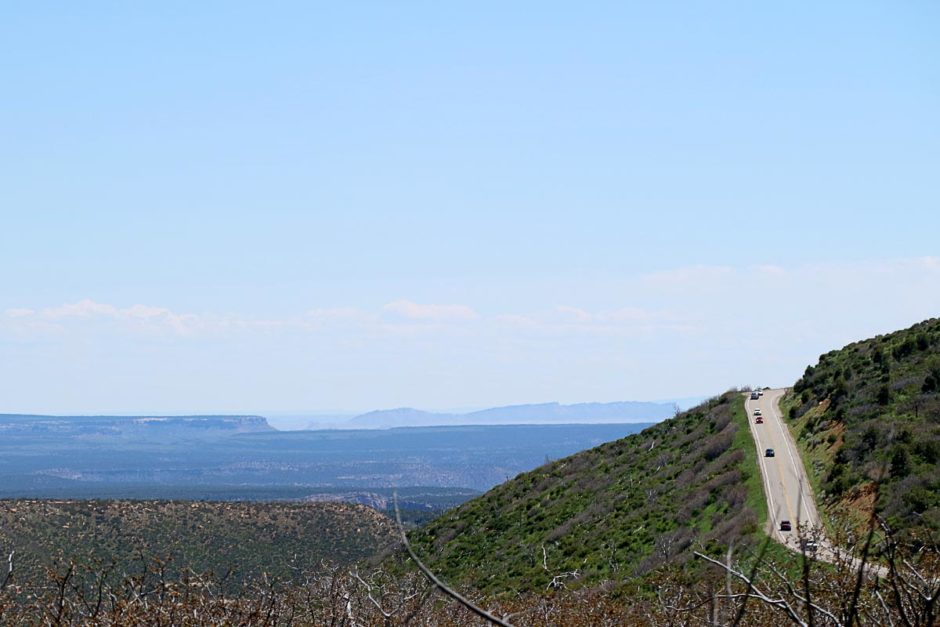
Also, it turned out to be a Sunday, the day before Memorial Day. On a road trip like this, you get less aware of time, especially days of the week and certainly holidays, which I never pay attention to anyway. But it meant that a lot of people were hitting the Park on this day.
“Weekenders,” I sniffily dismissed them in my mind. “Get out of my Park!”
But there they were, and they had all signed up for the guided tours, something else I hadn’t gotten a reservation for beforehand. We stood in line at the ticket counter and finally approached the desk, where the lady showed us the screen saying that everything was full today and tomorrow.
As we stood there, a new window popped open on her screen: four spaces had opened up on a tour that was scheduled in two hours. The lady got excited and we snapped up two of them. Excellent timing! All the people ahead of and behind us were out of luck.
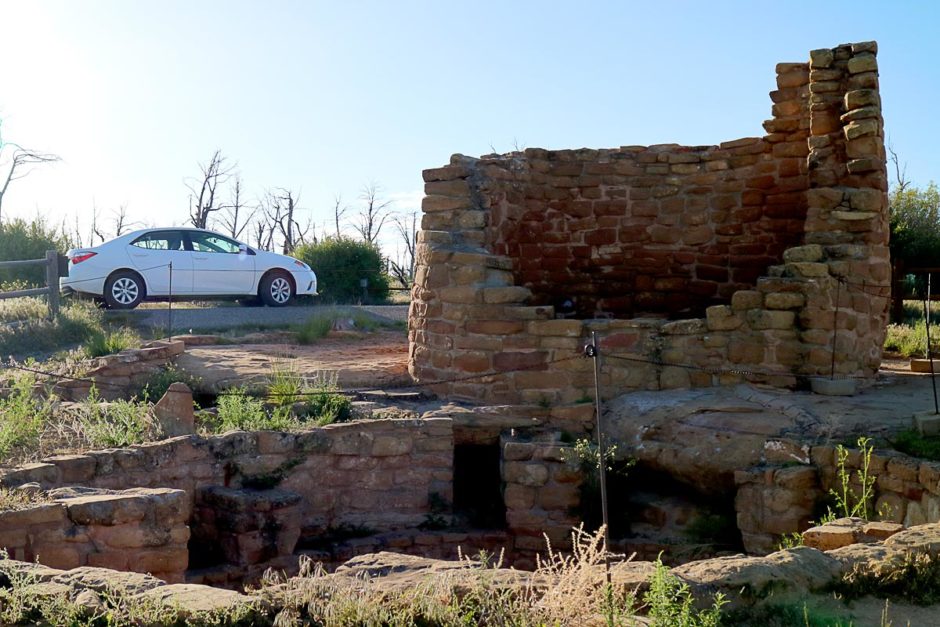
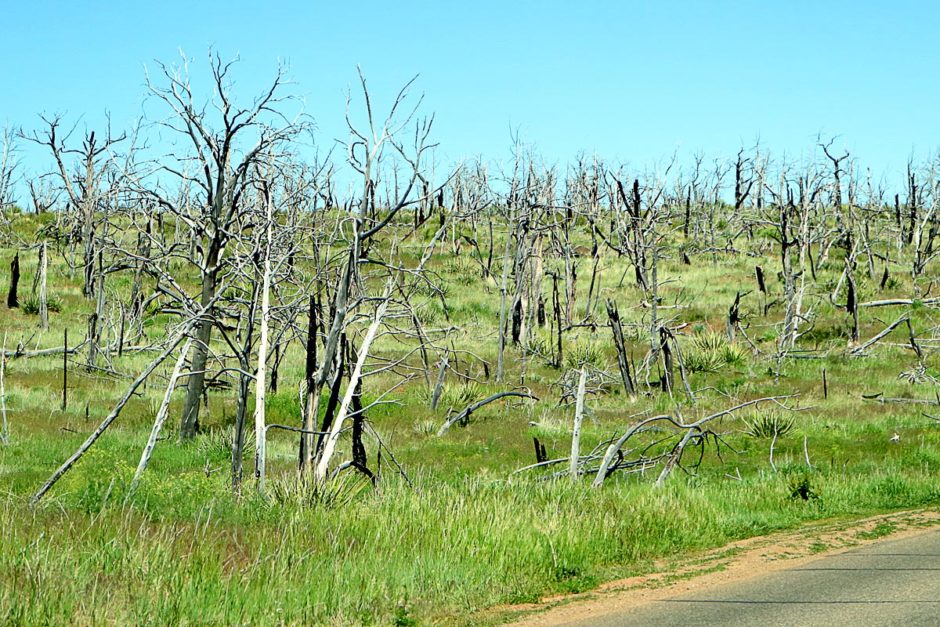
Remnants of a fire that swept through the Park.
We drove to the fee station and the actual entrance to the Park, where a sign in the ranger’s booth said “CAMPGROUND FULL”. I was shocked and asked him about it.
“Oh they’ve been full since Friday,” he said. There would be no camping for us tonight.
He gave me directions to an alternative campground outside the Park but I wasn’t following them. Our one experience with Bureau of Land Management camping hadn’t gone well at Joshua Tree National Park and I wasn’t interested.
But it was here that the diabetic trouble began. I had no backup plan and I didn’t want to stay in a motel. Camping is fun, even if Masayo finds it a bit of a drag, and we have done almost none of it on this trip. So there goes that little bit of fun. And the website had lied to me. As had my guidebook. And that ranger in the visitor center who didn’t know how the campground worked – what the hell?
We continued on to a picnic area for lunch but I was annoyed and didn’t feel like eating. We got our wifi out and I found a motel in the nearby town of Cortez, reserving the first one in the list without reading anything about it. And I barely ate: a small sandwich, a protein bar, and carrots.
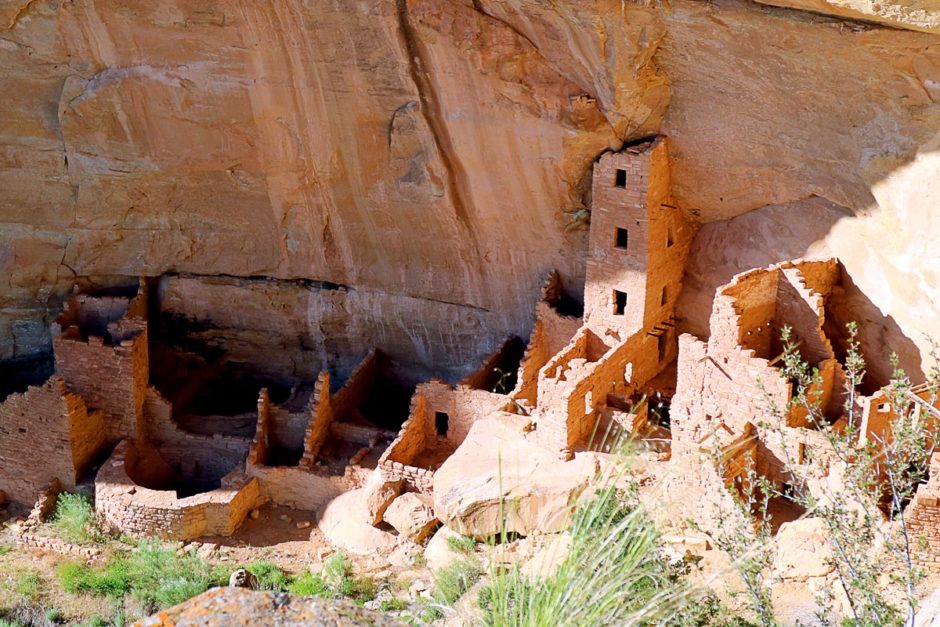
I felt a little better after eating but when the tour began my blood sugar was right around 300. We were going to be hiking some so I left it alone, but the heat and the highness made me nervous. Is exercise really such a good idea?
It turns out that the strenuousness of the tour had been vastly overstated by the Park: you walk down some steps and climb up a tiny ladder, then it’s just sitting and listening to the ranger.
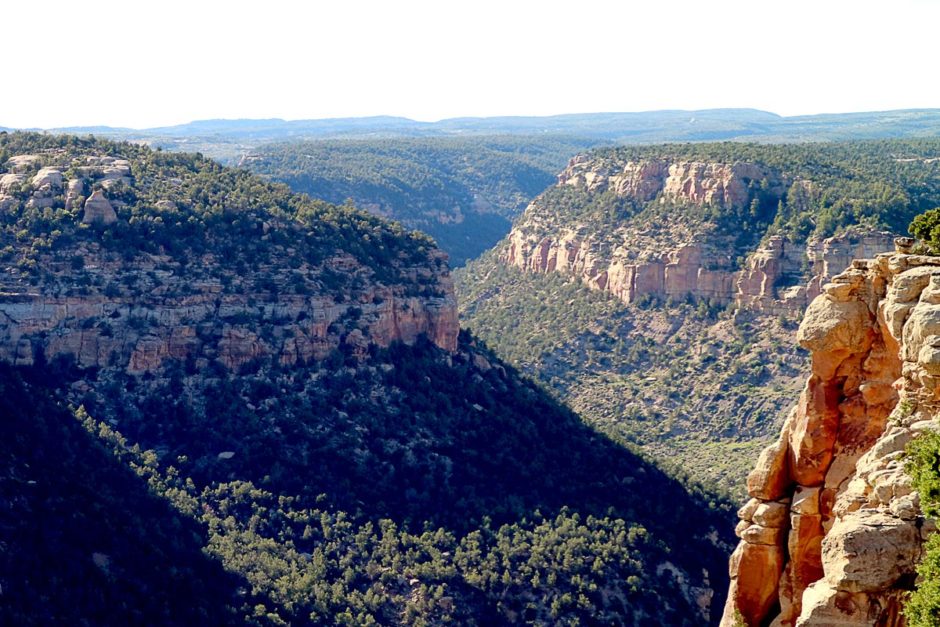
“Hey guys, let’s build our village here!”
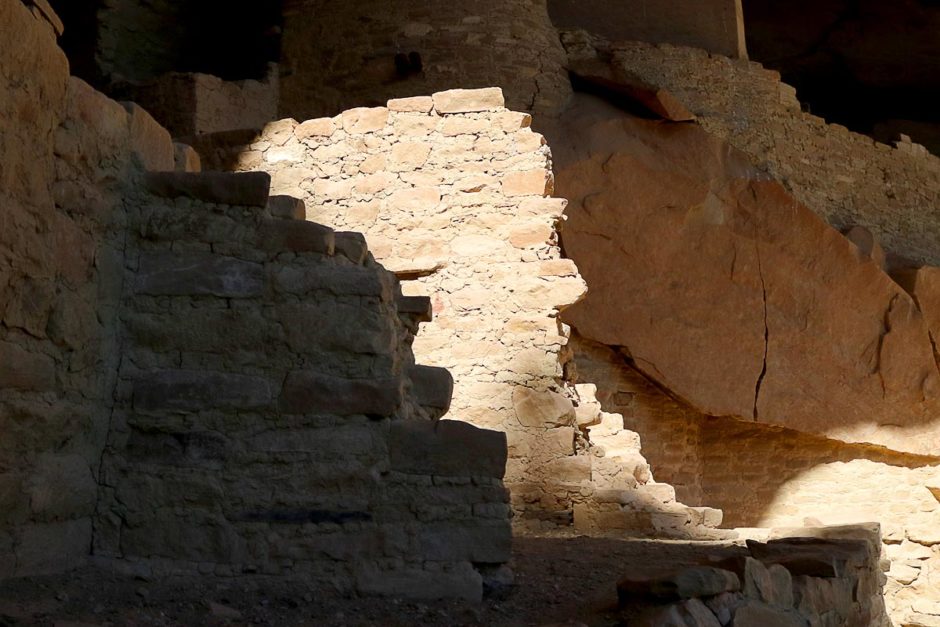
Ours was called Ranger Jackie, and she gave an interesting overview of how the cliff dwellings were created, when, by whom, and how they’d been found and turned into a National Park. She was happy to take endless questions from our group of about 40 people, and we did take advantage. Ranger Jackie was personable and knew her Mesa Verde cliff dwellings.
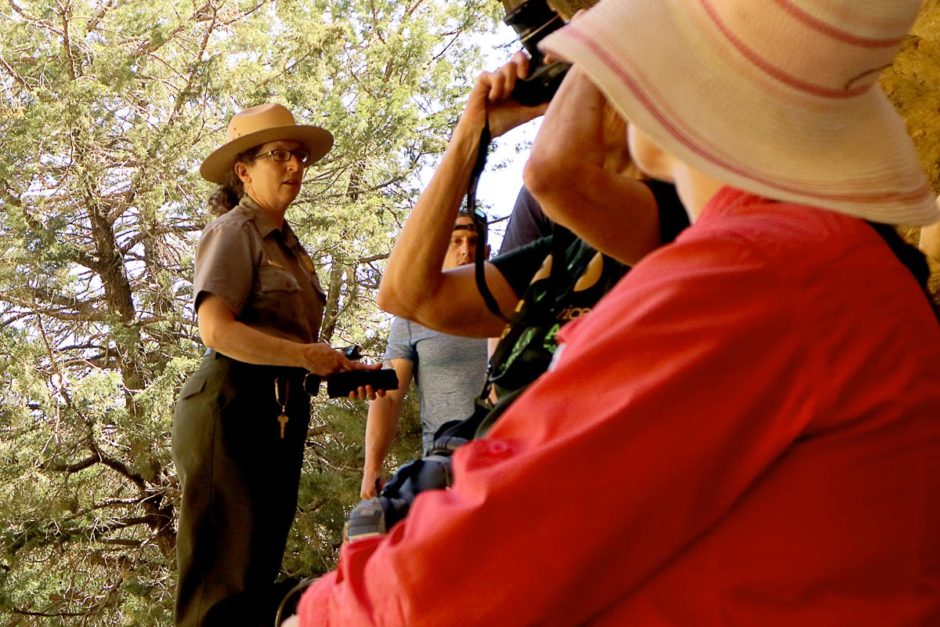
Ranger Jackie.
After the hour-long tour I checked to see how things had gone: still around 300. Sigh. Getting angry at the campsite situation wasn’t helping. And what could I do about it anyway? It was what it was. I took some insulin and ate a protein bar.
After the tour Masayo and I got in the car and saw the informative scenic loop by automobile as the late afternoon sun elongated the shadows and started turning the tops of things orange. On the loop you keep parking and doing short hikes to various archeological sites – either structures like cliff dwellings from the 1200s or the remains of pithouses from the 800s, which had been dug out and had protective metal buildings erected overhead.
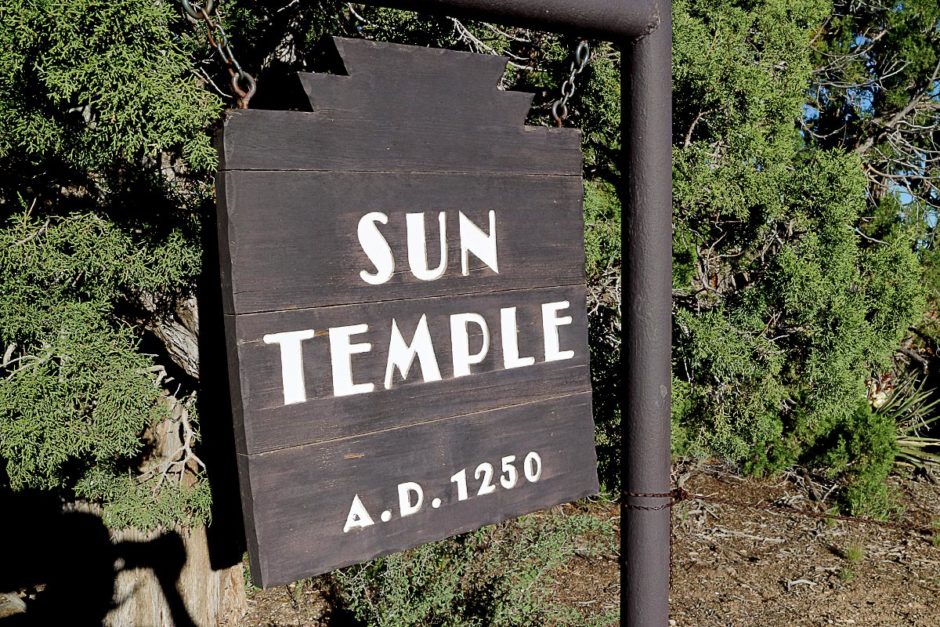
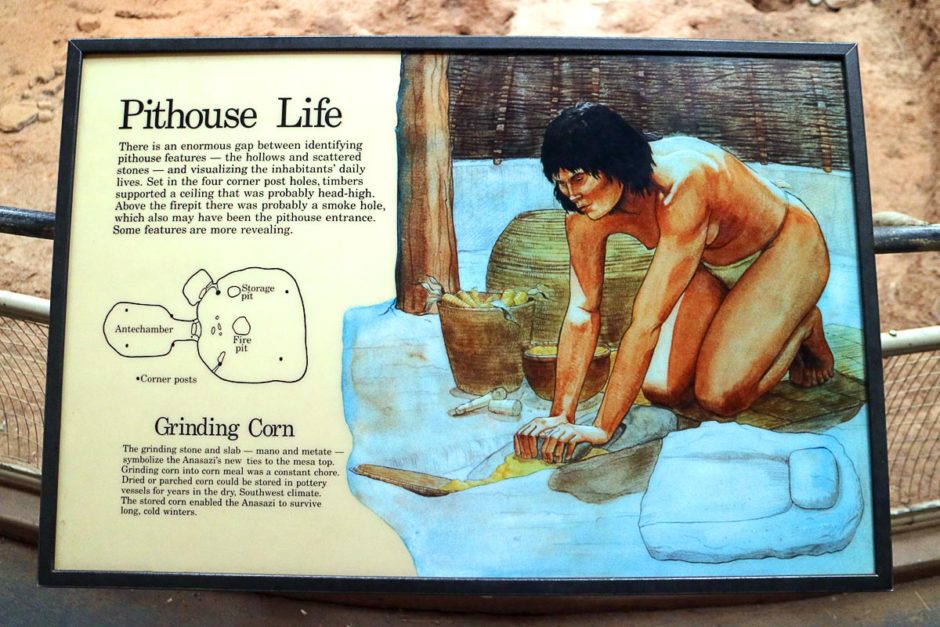
With that, we felt we had done pretty well seeing what Mesa Verde National Park is all about. For me, it’s about the way that humans built some uncanny and interconnected homes in the sides of cliffs, and how that which may seem impossible isn’t, if people believe enough to put the work in.
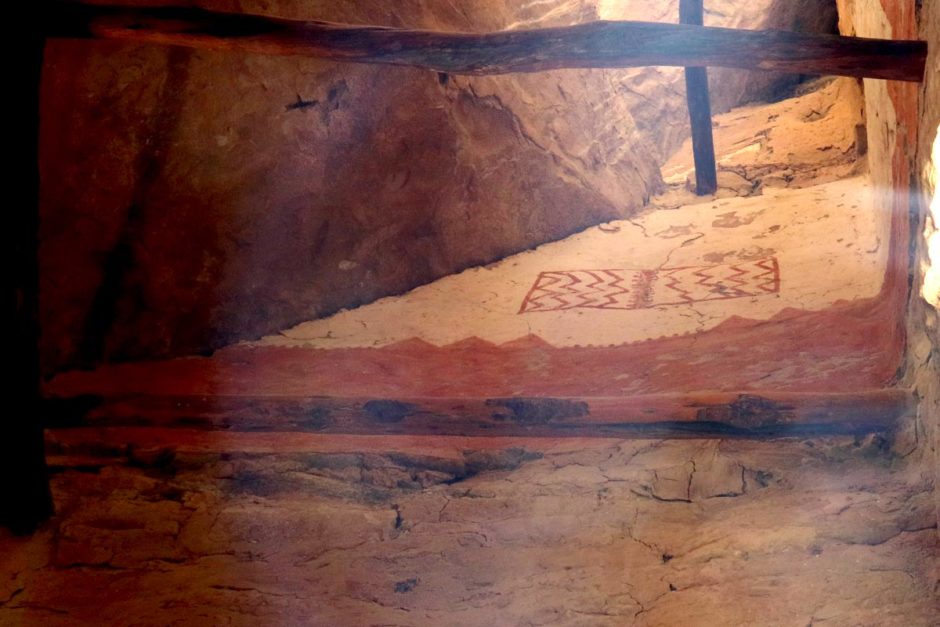
Peek carefully inside one of the windows and you can see original decorative wall art from centuries ago.
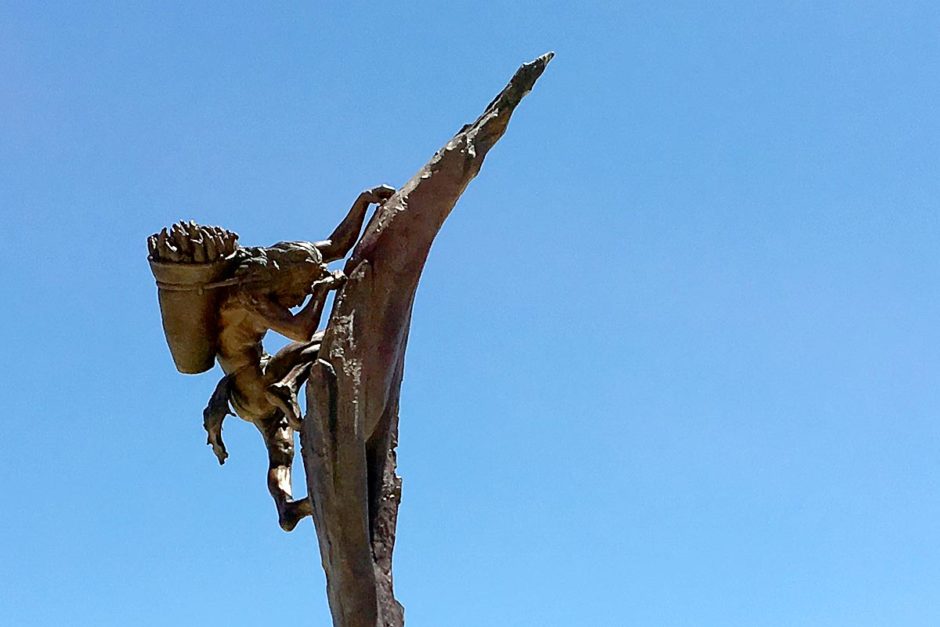
Human history in a stunning natural setting – that’s Mesa Verde. And I guess I have to begrudgingly thank the Park for throwing a monkey wrench into my camping plans, demonstrating that getting frustrated isn’t worth it. Parks are supposed to relax and instruct you, and in its many ways Mesa Verde did just that.
Thanks for reading. Suggested:
- Share:
- Read: Day 54: Canyon de Chelly, the trip's best surprise?
- Join: Free email newsletter (info and early video access)
- Support: Patreon (much earlier video access and other perks)

Support independent travel content
You can support my work via Patreon. Get early links to new videos, shout-outs in my videos, and other perks for as little as $1/month.
Your support helps me make more videos and bring you travels from interesting and lesser-known places. Join us! See details, perks, and support tiers at patreon.com/t1dwanderer. Thanks!
Want more? Get the free newsletter
Join us! Sign up to my email newsletter to receive updates, behind-the-scenes info,
and early links to my new YouTube videos before everyone else
